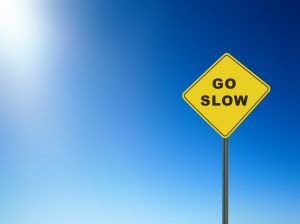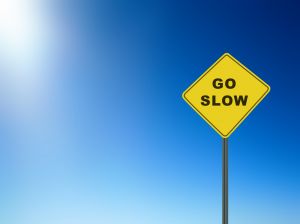 Tempo is a topic which comes up often when learning a musical instrument. Practicing at different tempos and dedicated tempo ear training can power all kinds of active listening skills. To share insights on choosing practice tempo most effectively we welcome guest expert Phil Amalong, of the pioneering online music lessons provider TheZoen.com.
Tempo is a topic which comes up often when learning a musical instrument. Practicing at different tempos and dedicated tempo ear training can power all kinds of active listening skills. To share insights on choosing practice tempo most effectively we welcome guest expert Phil Amalong, of the pioneering online music lessons provider TheZoen.com.
 As musicians, we know that slow practice is good. Or at least we’ve been told that. We often practice “under tempo” to learn a new piece or master a technically difficult section, incrementally notching upward on the metronome to get to the desired or “correct” tempo.
As musicians, we know that slow practice is good. Or at least we’ve been told that. We often practice “under tempo” to learn a new piece or master a technically difficult section, incrementally notching upward on the metronome to get to the desired or “correct” tempo.
But at the risk of committing musical heresy, I suggest the following: don’t spend another minute practicing slowly!
OK, here’s what I mean: Slow practicing may actually inhibit progress if we’re not acutely aware of physical motions, listening deeply and objectively, assessing our results with each repetition and making corrections.
Mindless repetition of any kind during practice can ingrain bad habits, but especially at a slow tempo.
Here are some ways I’ve helped music students successfully rethink and use slow practice techniques:
1. Think Slow Motion practicing
What happens at a slow tempo should replicate in as much detail as possible what happens at the goal tempo. Rather than just slowing down the tempo, think slow motion.
At the piano, for example, the gestures and moves should model the shapes that the body, arms, wrists and hands will make at the goal tempo. For younger music students, the idea of “miming” playing, making a slow motion activity like a slowed-down movie can actually be fun and engaging.
By moving more slowly, you free up attention to focus more on listening to details and polishing your musical expression.
2. “Slow motion” every aspect of the music
In this slow motion world, we get a microscopic view of every aspect of the musical performance:
- Dynamics
- Articulation
- Tone
- Rhythm
Think carefully about each of these as you play. Pay attention to how your movements influence them, and listen carefully to the results.
The old idea of “learn the notes first and make it musical later” is a recipe for boring playing, bad habits and slow progress. Make slow practice a true slow motion version of the goal.
Start as slowly as necessary to capture all the elements, keeping in mind that gestures require more energy to mimic in slow motion! As we speed up, the gestures become less exaggerated and more efficient.
3. Follow a Model
Especially for younger or beginning music students, the idea of slow motion playing and how to do it will require demonstration. Music teachers can play for the student at the goal tempo and then break it down, demonstrating in slow motion:
- The gestures: breaths, bowings, etc. in slow motion exaggerated form
- The musical details: dynamics, phrase shapes, articulation in slow-motion exaggerated form
- How the gestures and phrasing change and become more efficient with incremental increases in tempo as we approach the goal tempo
- How and what to listen for in the slow motion world. Focus on curiosity and wonder — what am I doing here and how does it sound? What should I do differently when I repeat this?
All the great ear-training skills built with fun apps like these will come into play here.
To Play or Not to Play
Music teachers often debate the question of whether or not to play for students.
Slow motion modeling is a strong argument in favor of doing so. If you’re a music student, ask your teacher to model how they want you to practice. Short demonstration videos showing how to practice a passage at a slow tempo are also very effective.
My music teacher often told me: “My role as your teacher is not to teach you how to play, but how to practice.” I believe this and it’s why I’m a strong advocate of having a great teacher compared to a DIY approach of learning to play an instrument or sing.
So crank down that tempo and enter the wonder laboratory of slow motion practicing. Your ears will open up to details and the slow motion approach (vs. simply slow) will help you cultivate the proper habits for playing like a pro at your goal tempo.









great article here Phil. I can't stress enough to my students the importance of practicing SLOWLY, yet CORRECTLY ! Very important concept!
Thanks Barry! It's exciting to see the transformations that happen when students adopt an active approach to slow practicing. All the ingredients–the ears/listening, the mechanics/motion, the memory/theoretical understanding come alive and integrate to make an expressive, communicative performance.
Interesting and subtle difference between slow and slow motion practice. I plan on testing this out.
This sounds kind of like a method that was mentioned in the book, A Talent Code where a piano student had a method of practice that gave much better results quickly in her playing skill.
Thanks for the comment, Chris!
A Talent Code sounds like an interesting book. There's definitely room for improvement in most music students' approaches through deliberate practice, and slowing things down in the right way can help with that.
The improveatthings.com site looks great – I look forward to "How to improve at music"!